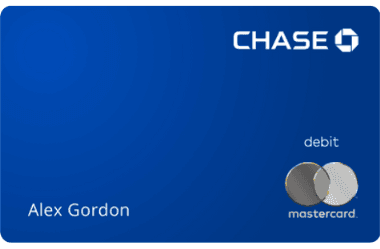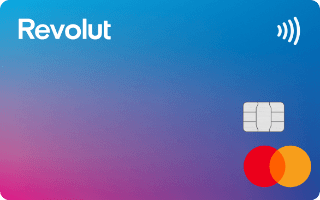If you’re on the hunt for an app-based bank or e-money account that helps you save on fees while abroad, you might be weighing up the pros and cons of Revolut and Chase.
Revolut was established in 2015 and has become known for making it easy to exchange and send foreign currency. Chase, which is owned by global finance giant JPMorgan, launched in the UK in 2021 and its current account has proven popular for its perks such as cashback.
So how do you choose between these rivals? We’ve compared them both below to help you decide.
Vital statistics
With Revolut’s free Standard account, you’ll get a blue-ish, pink-ish payments card, while Chase’s only (and also free) current account comes with a blue numberless debit card, with your details stored on the app so only you can see them.
Neither provider has high-street branches (Chase only has branches in the US), but you can use your card to withdraw cash at ATMs. There’s no overdraft available on either the Revolut or Chase account, but you do earn 1% AER on your in credit balance with Chase. Chase’s current account is also linked to a savings account paying 4.75% AER.
Revolut is not a bank, but it is regulated by the Financial Conduct Authority (FCA) as an electronic money institution. It must hold client funds in a segregated account so that if it collapses, it won’t be able to use your money to pay off its debts. But your money is not protected by the Financial Services Compensation Scheme (FSCS).
In comparison, Chase is a subsidiary of JPMorgan, which is authorised by the Prudential Regulation Authority (PRA) and regulated by the FCA and the PRA. This means that your money will be protected by the FSCS, which covers deposits of up to £85,000 per person.
Chase was named a joint winner in our independent 2025 Customer Satisfaction Awards, with 100% of customers saying they would recommend it to a friend. Revolut had 93% of respondents saying they would recommend it.
Finally, Revolut currently runs a number of welcome promotions including a sign-up bonus for new customers where if you open an account, you can receive £20.
Round 1: App features
Both Revolut and Chase mobile banking apps give you a visual breakdown of spending, but while Revolut will categorise your transactions and let you set spending limits, Chase won’t.
The 2 companies both offer a round-up service, where your purchases are rounded up to the nearest £1 and then automatically saved for you. With Revolut, you can set up different savings Vaults to save for different goals and earn interest of up to 4.75%. Chase’s round-up account pays a competitive interest rate of 5% AER. However, after a year, your money will be moved to your current account.
One perk of using Revolut is that you can convert currency before you travel, which means you might be able to take advantage of favourable exchange rates. Chase doesn’t offer a currency exchange service.
Your salary can be paid into either your Revolut or Chase account and you can also set up direct debits. You can contact customer service teams through in-app chats and freeze and unfreeze your card. Revolut’s app also enables you to send international payments, whereas Chase doesn’t.
- Winner: Revolut. It’s close and both have a lot to offer, but Revolut will categorise your transactions and allow you to send money abroad.
Round 2: Spending in the UK
 |  | |
| Free card transactions in the UK | ||
| Contactless card limit | £100 | £100 |
| Apple Pay | ||
| Google Pay | ||
| Samsung Pay | ||
| Free ATM withdrawals | Up to £500 per day | Limited to £200 per month or 5 withdrawals |
| Find out more |
Spending on both the Revolut and Chase cards is free in the UK and both cards come with the standard contactless limit of £100.
You can also add your Revolut or Chase card to Apple Pay and Google Pay. Chase also supports Samsung Pay.
Chase customers can also earn 1% cashback on their spending (up to £15 per month). It changed the rules on 1 March 2024 so that Chase customers now need to deposit a minimum of £1,500 a month to qualify for cashback.
With Revolut, you can make free ATM withdrawals of up to £200 a month in either the UK or abroad, across a maximum of 5 withdrawals. After this, you’ll pay a 2% fee. In comparison, Chase has an ATM withdrawal limit of £500 a day which applies in the UK and abroad.
- Winner: Chase, with its cashback and higher cash withdrawal limit.
Round 3: Using the card abroad
 |  | |
| Free foreign transactions | Unlimited | Limited to £1,000 per month |
| Free foreign ATM withdrawals | Up to £1,500 per month | Limited to £200 per month |
| Find out more |
Revolut lets you spend on your card fee-free on weekdays at the interbank exchange rate in more than 30 currencies. But you’ll be charged a markup of either 1% or 2% on the weekend, depending on the currency. Foreign transactions are also limited to £1,000 a month, after which a 0.5% fee applies, and cash withdrawals are limited to £200 a month (there’s a 2% fee after that).
Chase uses the Mastercard exchange rate when paying in the local currency and there are no fees or limits for spending abroad. Foreign ATM withdrawals are free, but there is a limit of £1,500 per calendar month – you will not be able to withdraw anything over this. There’s also a daily withdrawal limit of £500 per day.
- Winner: Chase. You’ll get unlimited spending limits abroad, plus a higher ATM withdrawal limit. There are no fees either.
One of the main perks of Chase over Revolut is its cashback offer, but make sure you pay enough into the account each month to qualify”
Round 4: Account types
 |  | |
| Free account | ||
| Premium account | ||
| Joint account | ||
| Teen account (for 16- and 17-year olds) | ||
| Kids' account or card | ||
| Business account | ||
| Find out more |
Revolut and Chase both offer free accounts. Chase only offers one type of current account, but you have up to 20 accounts open at once with a maximum of 10 savings accounts.
In comparison, Revolut has a range of e-money accounts: its standard account is free but it has 4 accounts that come with extra perks in exchange for a monthly fee.
On top of this, Revolut offers a junior account for kids, which is controlled by parents, as well as a business account. Note that neither Revolut nor Chase offers a joint account option.
- Winner: Revolut, thanks to its wider range of accounts.
Round 5: Signing up
 |  | |
| Apply through the app | ||
| Quick application | ||
| Credit check | ||
| Card delivery fee | Free | £4.99 |
| Card delivery timescale | 5-7 working days | Up to 9 working days |
| Find out more |
You can apply for both the Revolut and Chase accounts through their respective mobile apps in just a few minutes. Revolut will ask you to submit a selfie along with your ID and some personal details.
To open a Chase account, you will need to be 18 years or over, a resident of the UK only, have a smartphone and a UK mobile number and be a tax resident of the UK.
- Winner: Tie. The opening process is similarly easy for both accounts.
Round 6: Customer reviews
On reviews site Trustpilot, Chase has a score of 4.0 out of 5 from over 12,500 reviews. Revolut has a score of 4.4 out of 5 from over 190,000 reviews. These were checked in March 2025.
Customers said Chase was easy to use, but some think that the deposit required to earn ongoing cashback is too high.
Revolut also got praise for its ease of use, though some users complained about their accounts or transactions being frozen while they were under review.
In our 2025 Finder Customer Satisfaction Awards, Chase scored 4.3 out of 5, with 100% of respondents saying they would recommend the brand. In contrast, Revolut scored 4.5, with 93% of those surveyed saying they would recommend.
- Winner: Revolut performs better overall here.
Overall winner: Is Chase better than Revolut?
It’s pretty close between them, but Revolut wins 3-2 out of all the categories. They are both competitive options if you want an app-based bank or e-money account that helps you manage your spending on the go.
Chase beats Revolut in terms of offering cashback, monthly interest on current account balances, a savings account and FSCS protection.
On the other hand, if you prefer an account that has a greater range of app features and account types, as well as giving you the option of sending money abroad, you might prefer to look at Revolut.
More guides on Finder
-
Cash usage in the UK: Statistics for 2025
Will we eventually become a cashless society? We look at the latest cash usage statistics and trends for 2025.
-
Best banks and bank accounts in the UK 2025
Use our guide to compare the best banks in the UK and find out how to choose the right bank account for your needs.
-
Best current accounts & debit cards with cashback in the UK 2025
Learn how current accounts with cashback work, whether they’re right for you and how to find the best current account.
-
Opening a bank account with no credit check
Having bad credit isn’t ideal, but at least when it comes to bank accounts, you have a range of options. We’ve explored them to help you find the best one.
-
Best bank accounts with cheap or free overdrafts in the UK 2025
Learn all you need to know about your current account’s overdraft, from costs and fees to how to apply for one.
-
Best joint bank accounts in the UK for couples and friends 2025
Ready to take the plunge and open a joint current account with your other half? Learn how they work, how to open one and what happens if you split up.
-
Best high interest current accounts in the UK 2025
Getting a good rate on your account balance is hard but not impossible. We’ve looked at the advantages and catches of high interest current accounts.
-
Lloyds current accounts for April 2025
Are you considering a bank account with Lloyds? Check out its currents accounts, compare options and learn what benefits it offers.
-
Nationwide current accounts for April 2025
Nationwide has one of the most competitive current account offers available on the market. Discover their features, compare options and apply.
-
TSB current accounts for April 2025
TSB offers a range of current accounts that are especially suitable for consumers who are at the beginning of their financial journey – and some of them even pay an interest on balances.



